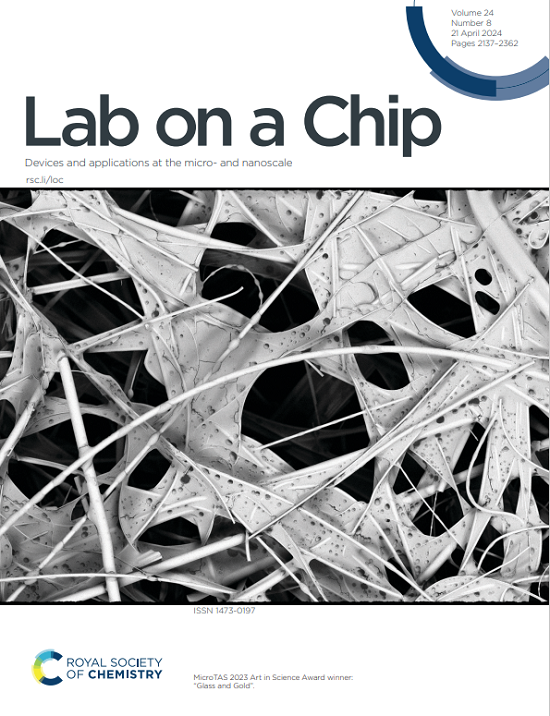A high-throughput microfluidic platform for functional hiPSC-derived liver organoids with bile duct- and lobule-like structures.
IF 6.1
2区 工程技术
Q1 BIOCHEMICAL RESEARCH METHODS
引用次数: 0
Abstract
HiPSC-derived organoids have attracted significant attention in stem cell research and regenerative medicine. However, obtaining functional organoids in sufficient quantities, consistent sizes, and reproducible formats remains a significant challenge. Here, we present an innovative microfluidic platform for the high-throughput production of HAMA core-shell microspheres (HCSM) for the encapsulation and differentiation of hiPSCs. Fish gelatin and HAMA were employed as the core and shell materials, respectively. Using this platform, we successfully fabricated HCSM with uniform and controllable sizes in a high-throughput manner. Single-cell hiPSC suspensions self-organized into spheroids within HCSM, leading to the formation of EBs exhibiting cavitation. These EBs effectively differentiated into brain organoids, beating cardiac organoids, and liver organoids. Detailed structural and functional analyses of the liver organoids revealed a heterogeneous cellular composition including hepatocyte-, bile duct epithelial-, epithelial-, and stellate-like cells. Structurally, they exhibited bile duct- and hepatic lobule-like formations. Functionally, liver organoids displayed lipid and glycogen accumulation, ICG uptake and release, albumin and urea secretion, as well as metabolic responses to APAP and rifampin. Consequently, our study introduces a high-throughput manufacturing platform for hiPSC-derived organoids, with the potential to generate functional organoids for therapeutic applications and drug screening.具有胆管和小叶样结构的功能性hipsc衍生肝类器官的高通量微流控平台。
hipsc衍生的类器官在干细胞研究和再生医学中引起了广泛的关注。然而,获得足够数量、一致大小和可复制格式的功能性类器官仍然是一个重大挑战。在这里,我们提出了一个创新的微流控平台,用于高通量生产用于hipsc封装和分化的HAMA核壳微球(HCSM)。鱼明胶和HAMA分别作为芯材和壳材。利用该平台,我们成功地制备了尺寸均匀可控的高通量HCSM。单细胞hiPSC悬浮液在HCSM内自组织成球体,导致形成具有空化作用的EBs。这些EBs有效分化为脑类器官、搏动心脏类器官和肝类器官。肝脏类器官的详细结构和功能分析显示其细胞组成不均匀,包括肝细胞、胆管上皮细胞、上皮细胞和星状细胞。在结构上,它们表现出胆管和肝小叶样的形成。功能上,肝类器官表现出脂质和糖原积累、ICG摄取和释放、白蛋白和尿素分泌以及对APAP和利福平的代谢反应。因此,我们的研究引入了hipsc衍生类器官的高通量制造平台,具有产生用于治疗应用和药物筛选的功能性类器官的潜力。
本文章由计算机程序翻译,如有差异,请以英文原文为准。
求助全文
约1分钟内获得全文
求助全文
来源期刊

Lab on a Chip
工程技术-化学综合
CiteScore
11.10
自引率
8.20%
发文量
434
审稿时长
2.6 months
期刊介绍:
Lab on a Chip is the premiere journal that publishes cutting-edge research in the field of miniaturization. By their very nature, microfluidic/nanofluidic/miniaturized systems are at the intersection of disciplines, spanning fundamental research to high-end application, which is reflected by the broad readership of the journal. Lab on a Chip publishes two types of papers on original research: full-length research papers and communications. Papers should demonstrate innovations, which can come from technical advancements or applications addressing pressing needs in globally important areas. The journal also publishes Comments, Reviews, and Perspectives.
 求助内容:
求助内容: 应助结果提醒方式:
应助结果提醒方式:


